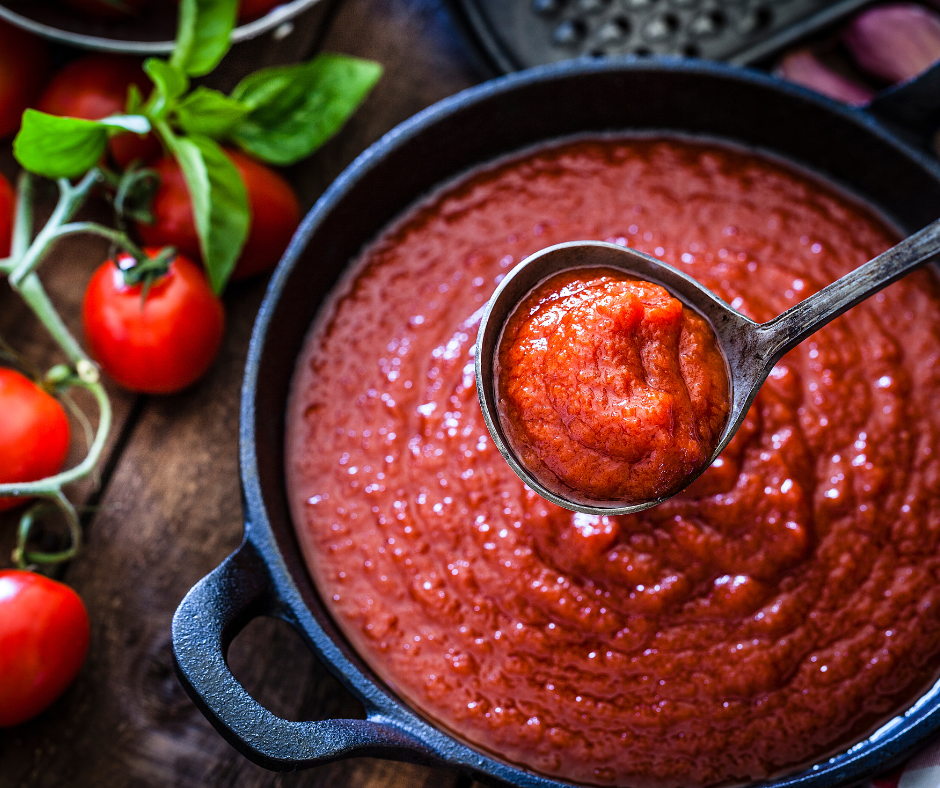During a recent investigation into food.com’s repository of pizza recipes one particular recipe, the “Ultimate Pizza Sauce” piqued my curiosity. This recipe uses 15 ingredients and requires 1 hour and 20 minutes to prepare. This is different from what I remember since I was a child.
While I was growing up, my parents owned restaurants on the Adriatic coast in Italy, and I worked there with them for many years. My mother, who is from Naples, always insisted on a specific brand of canned tomatoes when preparing pizza for our clients. She crushed the tomatoes thoroughly, mixed them with salt, extra virgin olive oil, and a few basil leaves, sautéed the sauce gently for a few minutes and then spread it directly on pizza. Nothing else.

See bottom of the article for more details about the recipes above including the list of ingredients of each and a link to the recipe’s website.
With nearly 400 reviews and an average rating of 4.3 stars (surging to 4.74 by August 2023), this recipe is a clear winner. Among the many enthusiastic comments, I encountered phrases like, “I make the ‘Ultimate Pizza Sauce’ in bulk and freeze it” and “It’s great for pasta too,” as well queries pondering the essence of “tomato sauce.”

Prompted by these and other comments, two fundamental questions came to mind, questions that have long been debated by Italian pizza chefs (pizzaoli), cooks, and culinary experts:
1. What sets tomato sauce for pizza apart from other tomato sauces — e.g., tomato sauces for pasta or parmigiana or other dishes?
2. Which tomato variety is most suitable for pizza sauce, and what is the rationale behind this choice?
In the list below synthesize and summarize highlights from a variety of Italian experts on how to create the perfect tomato pizza sauce for pizza (translated from the original):
1. Virtually all agree on using premium, unprocessed tomatoes; and striving to maintain as much as possible the inherent characteristics of the tomatoes. Fresh, dense, and sun-ripe tomatoes are always the best option together with a homemade “conserva” (see here what conserva di pomodoro is). Fresh tomatoes, however, may introduce excess moisture, so make sure they are uniform and picked at peak ripeness, this might explain why famous pizzaiolos use high quality canned San Marzano tomatoes.
2. Abstain from the practice of cooking tomatoes as is done for other sauces. Pre-cooking risks compromising freshness and results in a dense, parched sauce. A resounding “no” to pre-cooking.
3. Premium peeled tomatoes often require no further adjustments; a touch of salt suffices.

4. Tomato puree’s excess moisture poses a challenge, causing the dough to become soggy during baking, especially when used together with high-hydration pizza dough.
5. Consider individual preferences – some may not favor chunks of tomato in the sauce.
6. Infuse the sauce with basil, avoiding potent extra virgin olive oil variants that could overpower other flavors.
7. A hint of oregano could intrigue discerning palates (Valdès, 2014).
8. Avoid blending tomatoes, as this yields an excessively watery consistency and introduces unwanted air. Elevated water content can over-saturate the dough and can cause uneven cooking or undesired holes. Many pizzaoli swear that crushing the tomatoes by hand is best.
9. Do not put cold tomato sauce directly from the refrigerator on the pizza dough, since this impedes proper dough cooking. Allow the sauce to reach room temperature.
10. A golden rule: appreciate the varied nuances of tomato flavors. Pair the tomato sauce judiciously with chosen toppings; some toppings require minimal moisture (Dissapore, 2023).
11. The quantity of tomato sauce is important – not too much, not too little. Applying too much sauce can cause perforations in the dough, while not applying enough risks leaving the dough dry during baking.

Comparing recipes and comments on Italian and American food websites reveals many interesting differences in approach, likely reflecting differences in taste.

Here are two: (1) In the Italian culinary philosophy, pizza sauce embodies simplicity – modestly cooked and sparingly seasoned, it shines a spotlight on the flesh, juice, and flavor of the tomato. Conversely, the “ultimate pizza sauce” recipe embraces complexity, since it requires 80 minutes to prepare and uses 15 ingredients. But people love it! (2) A previous analysis of food.com’s pizza recipes revealed a heavy reliance on frozen pizza dough.
By contrast, Italians are fascinated with the dough itself, emphasizing flour quality, type of yeast, the procedure and time devoted to fermentation, and so on. Consequently, the sauce must harmonize with – rather than overshadow – these elemental components. You know, “de gustibus non est disputandum”.
References
Dissapore. (2023, March 23). Salsa di pomodoro sulla pizza: i 5 errori da non fare. Dissapore. https://www.dissapore.com/cucina/salsa-di-pomodoro-sulla-pizza-i-5-errori-da-non-fare/
Il Panificio di Camillo. (2020, July 30). Guida al pomodoro per pizza: polpa, passata, pelati o salsa fresca. Panificio Di Camillo. https://www.ilpanificiodicamillo.it/polpa-passata-pelati-salsa-fresca-guida-pomodoro-pizza/
kaggle.com. (2019, October 29). 🍕 Food.com EDA and Text Analysis 🌯. Kaggle.com. https://www.kaggle.com/code/etsc9287/food-com-eda-and-text-analysis/script
lifeinitaly. (2016, July 26). How to make a Tomato Preserve (Passata di Pomodoro). Life in Italy. https://lifeinitaly.com/how-to-make-a-tomato-preserve-passata-di-pomodoro/
Mcgee, H. (2004). McGee on food & cooking : an encyclopedia of kitchen science, history and culture. Hodder & Stoughton.
SAMS_Club. (n.d.). Ultimate Pizza Sauce Recipe – Food.com. http://Www.food.com. Retrieved August 11, 2023, from https://www.food.com/recipe/ultimate-pizza-sauce-114392
Valdès, G. (2014, March 5). Pomodoro per pizza: quale scegliere, dosi e cottura. Agrodolce. https://www.agrodolce.it/2014/03/05/pizza-scegliere-il-pomodoro-giusto/



Leave a comment